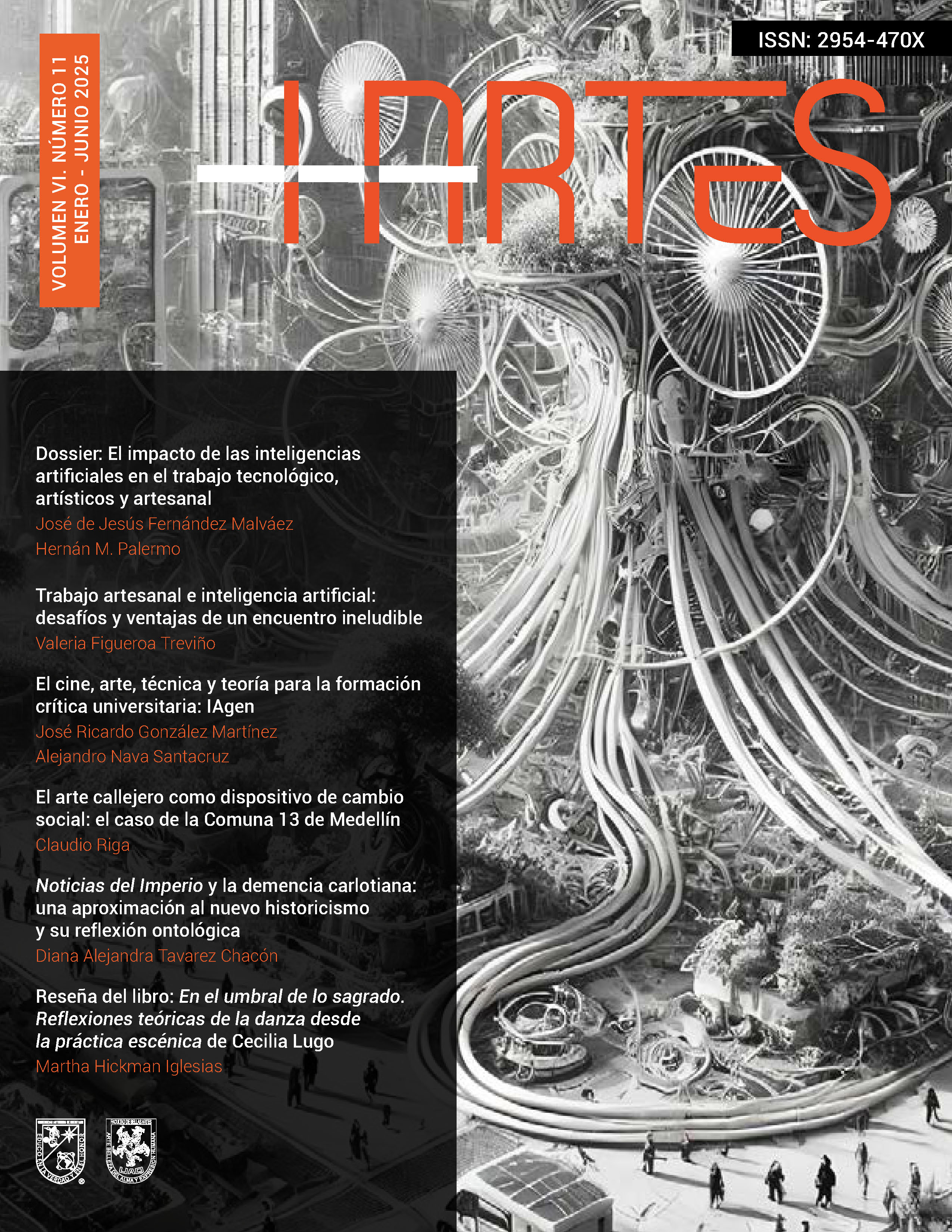Abstract
Technological innovations transform the creation and perception of art by modifying the way in which works of art are created and perceived, as well as any activity of the homo faber. These innovations impact creativity, evolution and inventiveness, and alter the very notion of the artistic production process. In particular, emerging technologies such as artificial intelligences, are transforming the creation and appreciation of art, raising implications for artists, artisans and society at large. The intersection of technology, art and ethics in the field of artificial intelligence (AI) enables a critical stance on the reduction of human and artistic elements to mere objects or individual traits. The proposed concept of artnomics seeks to establish itself as the device to mediate between the uniqueness of art and the increasing reliance on AI, suggesting that, while AI can democratize artistic creation, it also poses risks such as the erosion of authenticity. The artnomics idea raise as a critical reflection on how to balance the opportunities and risks of AI in art thus promoting a holistic vision of art that prioritizes its social and cultural value over the economic one.
References
Adorno, M. H. ([1947] 1994). Diálectica de la ilustración. Editorial trotta.
Agamben, G. ([1970] 2005). El hombre sin contenido. Ediciones Áltera.
Augé, M. (2000). Los no lugares, espacios del anonimato. Una antropología de la Sobremodernidad. Editorial Gedisa.
Benjamin, W. ([1936] 2003). La obra de arte e la época de su reproductibilidad técnica. Itaca.
Blanchot, M. (1987). La escritura del desastre. Monte Avila Editores.
Bourdieu, P., et al. (1999). Efectos de lugar, en La miseria del mundo. Fondo de Cultura Económica.
Braidotti, R. (2013). Lo Posthumano. Gedisa.
Fernández, E. N., & Vázquez Estrada, A. (2022). Aproximaciones des-antrópicas: contrarrelatos,desobediencias y visualidades otras. Cuadernos de Música, Artes Visuales y Artes Escénicas, 17(2), 96-111. https://doi.org/https://doi 10.11144/javeriana.mavae17-2.adcv
Gadamer, H. G. (1999). Verdad y metodo I. Ediciones Sígueme- Salamanca.
Haraway, D. J. (1991). Ciencia, cyborgs y mujeres. La reinvencion de la naturaleza. Ediciones Cátedra.
Illich, I. (1974). La convivencialidad. Barral Editores.
Rouhiainen, L. (2018). Inteligencia Artificial. Alienta Editorial.
Simondon, G. (2008). El modo de existencia de los objetos técnicos. Prometeo Libros.
Weber, M. (1922). Economía y Sociedad. Fondo de Cultura Económica de España.

This work is licensed under a Creative Commons Attribution-NonCommercial-ShareAlike 4.0 International License.
Copyright (c) 2025 HArtes


